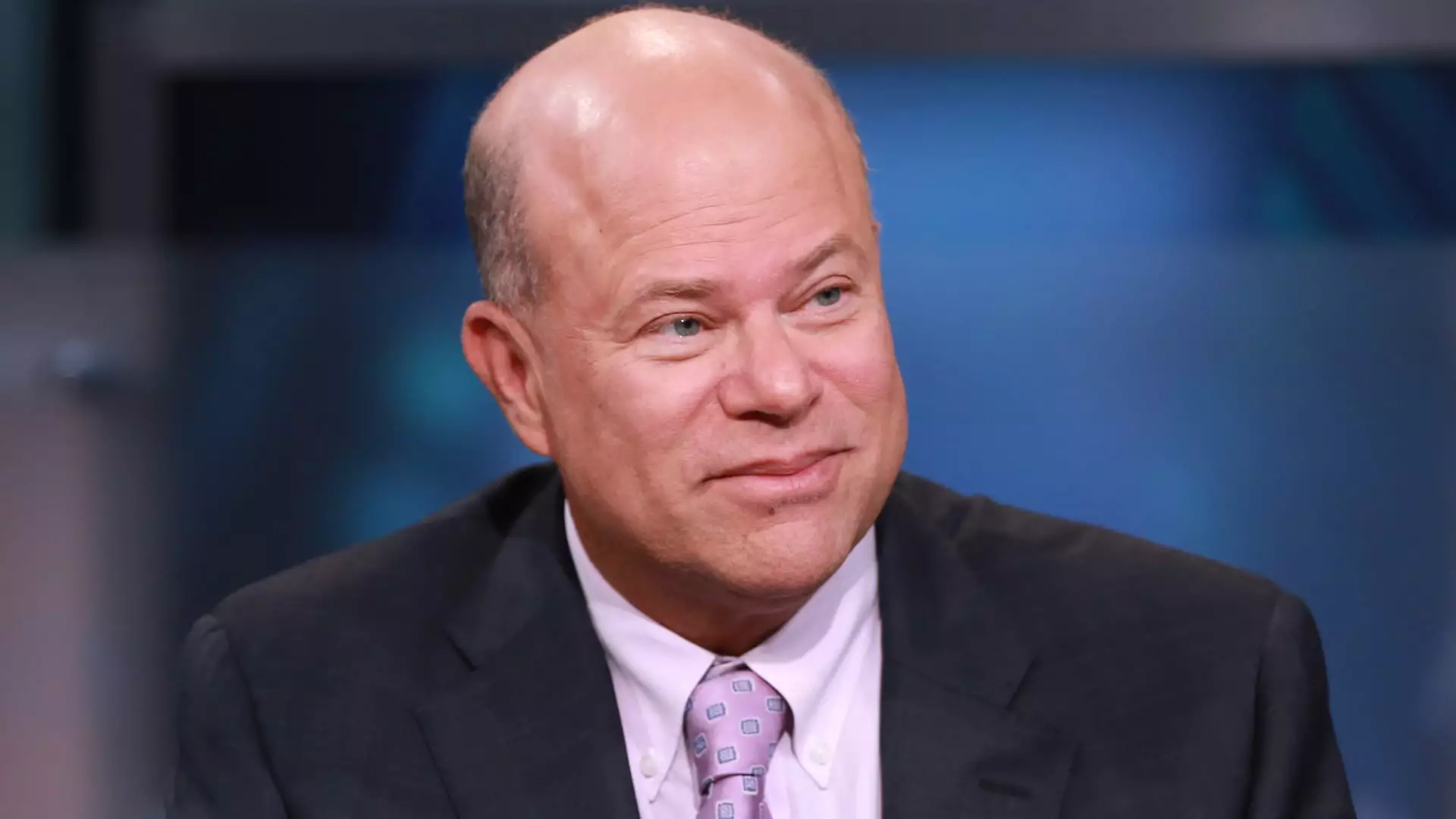In the ever-changing landscape of finance, investors constantly grapple with the implications of central bank decisions. Recently, David Tepper, the founder of Appaloosa Management and owner of the NFL’s Carolina Panthers, shared his insights on the Federal Reserve’s actions during an appearance on CNBC’s “Squawk Box.” Tepper’s commentary on interest rate adjustments and the resulting market dynamics offers a lens into the complexities investors face in today’s economic climate.
Tepper emphasized the importance of the Federal Reserve’s credibility in the financial markets. He highlighted that when Federal Reserve Chairman Jerome Powell communicates intentions about monetary policy adjustments, investors ought to take those words seriously. “You just read what these guys are saying,” Tepper remarked. His perspective underscores the importance of central banks maintaining trust among market participants. When they signal changes, especially substantial ones like the half-percentage point cut recently implemented, it signifies a shift in economic strategy aimed to influence broader economic conditions.
The Fed’s recent rate cut, marking the beginning of an easing cycle, was somewhat surprising given that major economic indicators remained relatively stable. This led Tepper to caution that the Fed’s actions could bring about a similar scenario as seen in the late 1990s when aggressive easing in a solid economy fueled market bubbles. Investors must tread carefully here, balancing the need for growth with the historical risks of rapid monetary policy shifts.
The U.S. economy shows resilience, with steady gross domestic product (GDP) growth and consumer spending tracking positively, as noted by Tepper. The Atlanta Fed even projected a growth rate of around 3% for the third quarter. However, an uneven labor market and persistent inflation rates, which remain above the Fed’s 2% target, complicate the storyline. Tepper pointed out that these mixed signals create a paradox for investors. The Fed’s rationale for cutting rates included a need to boost economic activity in response to labor market softness, but the overall economy still presents robust indicators.
Tepper’s reflections hint at a cautious apprehension surrounding the Fed’s aggressive monetary policy, given the contrasting fundamentals at play. A decision to ease monetary conditions in a time of perceived economic strength raises the question of whether such measures are a precursor to deeper issues within the economy that are yet to be addressed.
Despite his reservations, Tepper remains bullish on U.S. equities, recognizing the immediate benefits that easy monetary policy can provide in the short term. His strategy reflects a common sentiment among investors: the tendency to participate in a rising market, even when underlying economic data might warrant caution. “I don’t love the U.S. markets on a value standpoint, but I sure as heck won’t be short,” he stated, emphasizing the tension between value investing and participating in a favorable market momentum.
This mindset reveals a fundamental challenge in the investment world—how to reconcile long-term value principles with the realities of market behavior driven by monetary policy. Tepper’s pragmatic approach suggests that while caution is warranted, outright opposition to market trends could be detrimental in the current environment.
Interestingly, Tepper’s investment focus is shifting more towards the Asian and European markets, a move that echoes growing investor sentiment favoring international equities amid evolving global economic scenarios. The recent rate cut and accompanying government support measures in China have prompted Tepper to go “all in” on Chinese investments, highlighting a potential shift in capital flows due to perceived opportunities outside the U.S.
This burgeoning interest in global markets may signal a broader transition among investors looking to diversify portfolios amid increasing uncertainties domestically. The narrative that once favored American prosperity now faces challenges from international competitors, particularly in regions that are implementing robust economic support systems.
As Tepper’s insights illustrate, navigating the intricacies of the current financial landscape requires both vigilance and an openness to adapt strategies in response to evolving market dynamics. Investors must be prepared to respond not only to domestic policy shifts from the Federal Reserve but also to emerging opportunities anywhere in the world. The dual pressures of maintaining market credibility while encouraging economic growth could very well reshape the strategies we see in the investment community in the months to come. Having a thoughtfully diversified approach, one that spans global markets, may well serve as a prudent guard against the uncertainties that lie ahead.

Leave a Reply